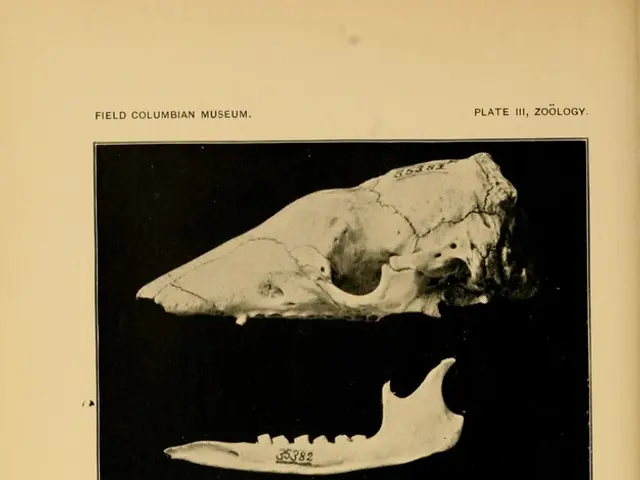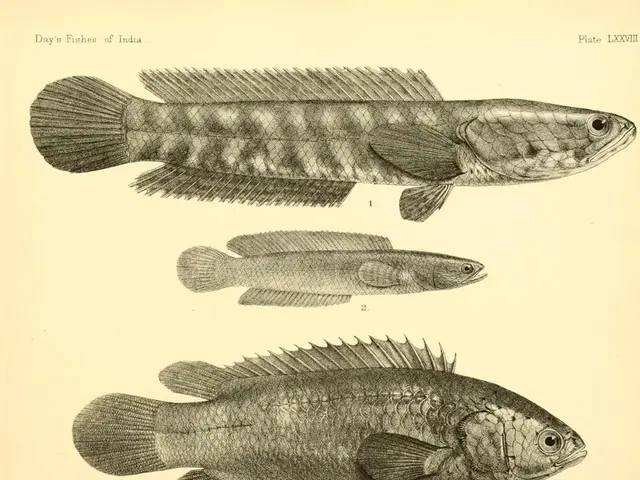Treatment of a mesenteric arteriovenous malformation in a patient with alcoholic liver cirrhosis through percutaneous transhepatic vascular embolization, resulting in reduced portal pressure – A case study
In a recent case study, a 66-year-old man presented with symptoms of fatigue. Upon examination, no abnormalities were found, but further investigations revealed an arteriovenous malformation (AVM) in the mesentery, causing portal hypertension.
The AVM was connected to both the ileal artery and ileal vein, and on abdominal contrast-enhanced computed tomography, blunting of the liver edge, splenomegaly, and an anastomosis of the ileal artery and ileal vein via a nidus within the mesentery were identified. The ileal vein, which was the dominant outflow vein, was embolized during the procedure.
The man's medical history included fatty liver, hypertension, hyperuricemia, and chronic gastritis. Blood tests revealed elevated levels of γ-glutamyl transpeptidase and total bilirubin, indicative of hepatic dysfunction. Furthermore, the man regularly consumed about 100-180 g per day of alcohol.
To treat the mesenteric AVM, vascular embolization was performed using a percutaneous transhepatic approach. The blood flow in the AVM disappeared after the embolization, and a decrease in portal pressure of 29% was confirmed. No complications arose from the embolization procedure.
The man tested negative for hepatitis B, hepatitis C virus, and antinuclear and antimitochondrial antibodies, ruling out other potential causes of his portal hypertension.
Percutaneous transhepatic vascular embolization (PTVE) for mesenteric AVMs causing portal hypertension can lead to significant clinical improvement. By reducing abnormal arteriovenous shunting, PTVE lowers portal venous pressure and alleviates portal hypertension complications such as variceal bleeding and ascites.
This minimally invasive intervention offers several potential benefits: decreased portal pressure and related symptoms, prevention of variceal bleeding and ascites, avoidance of more invasive surgical procedures, and possible improvement in quality of life with a minimally invasive approach.
However, the rarity of this condition and limited high-quality outcome data specific to this treatment modality necessitate individualized patient assessment and multidisciplinary management. More research is needed to provide detailed long-term outcome data specific to mesenteric AVMs treated by PTVE.
References: [1] Specific literature on this topic is limited. However, broader interventional radiology and portal hypertension management literature support these general conclusions.
- Incorporating workplace-wellness programs could help this 66-year-old man manage his chronic-diseases better, especially since he has a history of fatty liver, hypertension, hyperuricemia, and chronic gastritis.
- As part of his health-and-wellness plan, the man should consider CBD as a potential treatment for managing chronic pain, given that he consumes large amounts of alcohol daily.
- The man's skin-care routine should prioritize hydration to help protect his liver, given his hepatic dysfunction as indicated by elevated γ-glutamyl transpeptidase and total bilirubin levels.
- Future researchers could investigate the effectiveness of various therapies-and-treatments, such as nutrition and fitness-and-exercise, in managing chronic-kidney-disease, as related complications were not explicitly discussed in this case.
- This case study suggests that the broader field of science should continue to explore and develop minimally invasive interventions like percutaneous transhepatic vascular embolization (PTVE) for treating chronic-diseases associated with severe medical-conditions.




